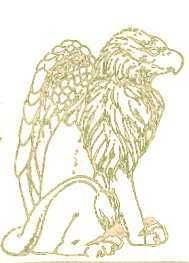Search for ferns by common name, latin name, USDA Zone, or by keywords like whether the fern is Evergreen, Sub-Evergreen, Semi-Evergreen, Deciduous, or Wintergreen or just browse our current fern selections.
Five-Finger Maidenhair Fern (Adiantum aleuticum)
Five-Finger Maidenhair Fern (Adiantum aleuticum)
This name may be a bit confusing to many and throw others into lustful fits as they equate this with some elusive treasure from old-time catalogs, but this is the new classification for our western U.S. maidenhair. It was formerly grouped with the East Coast native Northern Maidenhair, Adiantum pedatum, and then subsequently separated out as a subspecies appearing under the name Adiantum pedatum subspecies aleuticum before eventually earning a place as a distinct species in its own right, Adiantum aleuticum when it was formally described by Cathy Paris in 1991. Botanists have bickered back and forth over whether to leave it classified as a distinct species or continue to group it with or as a subspecies of A. pedatum, but the important thing is that these two U.S. natives are morphologically distinct from one another even though they are often confused. The colloquial common name of Five-Finger Maidenhair Fern is aptly descriptive, since the blade on Adiantum aleuticum is more stiffly arching with a main rachis that sticks out farther than the adjacent pinnae, making it reminiscent of a hand with a long, outstretched middle finger. While the Northern Maidenhair, Adiantum pedatum, tends to be more regular and fan shaped and reaches a height of 2’, the Western Maidenhair, Adiantum aleuticum, is highly variable in the wild and from when cultivated from spore, sporting slight variations in spacing between the pinnules and is capable of growing slightly taller, up to 2 1/2' feet. In the wild they are typically found on steep slopes, embankments, or shaded rocky outcroppings along streams, rivers, and other bodies of water. They prefer a moist to slightly moist slope with ample indirect or filtered light where water is available but does not pool around the roots in the wet winter months, and once they are situated in a favorable spot they are a graceful, lovely and reliable garden perennial provided they do not get too wet or too dry. Since they hail from the temperate Western United States, they are not quite as cold tolerant as their eastern counterpart, and prefer the mild winters of USDA Zones 5-8.
There are also two recognized subspecies of the Western Maidenhair that are now considered as ecotypes; subsp. calderi is the serpentine ecotype, and subsp. subpumilum is the dwarf ecotype. For those interested in Cathy Paris' formal description it can be found in "Rhodora", The Journal of the New England Botanical pub Vol. 93, No. 874, April 1991.
Frond Condition: Deciduous
Mature Height: 12-30" (1 - 2 1/2')
Origin: Western North America
Cultural Requirements: Some Shade, Part Shade, Full Shade, Evenly Moist to Slightly Moist
USDA Zones: 5,6,7,8









